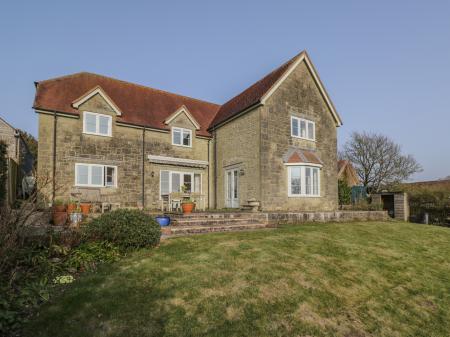
There are two parish churches in Orcheston, and St George's is now redundant, being looked after by the Churches Conservation Trust.
Visiting
Unfortunately here's another case where the postcode sends you to the wrong place. If you use the official postcode in a satnav you will end up at the school on Elston Road, east of Orcheston. The church is actually just south of the four-way intersection in the middle of the village. There is a signpost on the road, but the church is quite obvious, so you won't miss it.
When I visited there was a workman repairing some crumbling masonry at the west end of the nave. He told me he does a lot of work for the Churches Conservation Trust because the medieval churches need constant maintenance or the old masonry just disintegrates.
The most striking part of the church interior is easy to miss; as you pass under the west tower into the nave, look up, and you'll see that the tower arch has beautifully decorated Early English vaulting, with finely carved trefoil panels. Traces of paint cling to the vaulting, giving you a glimpse of how colourful it must have looked once.
The other interesting historic feature inside the church is just as easy to miss; I almost walked out without seeing it. Over the westernmost window arch on the north side of the nave is a fascinating carved head of a man, looking very dour. It does not appear to have formed part of a corbel, as you might expect. It seems instead to have been brought from elsewhere and placed over the window, perhaps during the 19th-century rebuilding.
Just inside the nave is a very simply 18th/19th-century pedestal font, and on the south wall nearby is a brightly painted funeral hatchment to a local gentry family. On the opposite wall is a royal coat of arms to Charles I, dated 1636. Also on the south wall is a memorial to Eliza Mills, who died at just 15 years old in 1845.
In the chancel is another 19th-century memorial, to the delightfully named Rev. Chambre Brabazon Ponsonby of Oriel College, Oxford, who died in 1830 after 17 years as rector. There are excellent twin-headed brass candle-holders hovering over the nave pews, and a nicely carved 19th-century pulpit atop a stone base.
St George's is a lovely country church, and it is the setting in the quiet rural valley that makes it such a delight to visit.








 We've 'tagged' this attraction information to help you find related historic attractions and learn more about major time periods mentioned.
We've 'tagged' this attraction information to help you find related historic attractions and learn more about major time periods mentioned.




